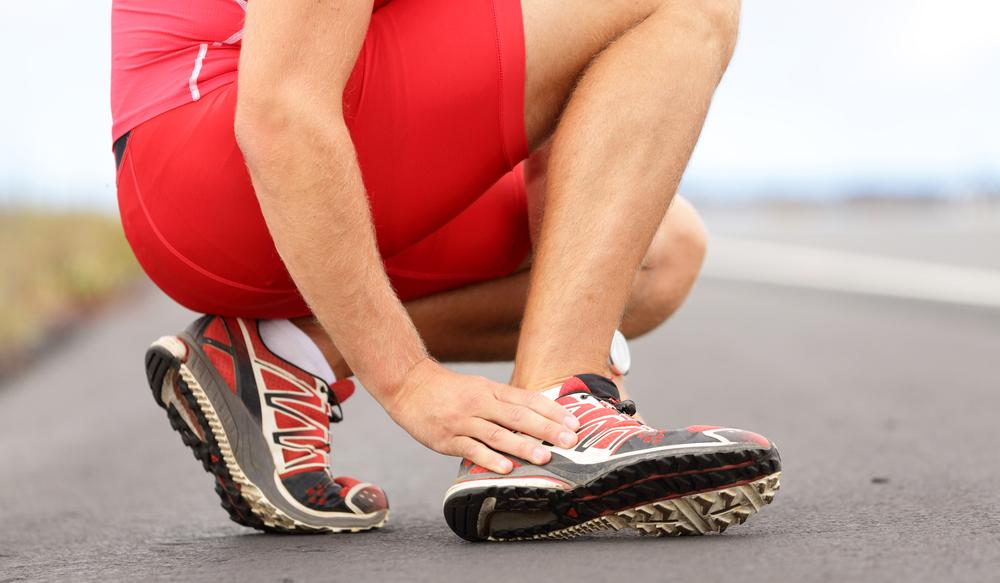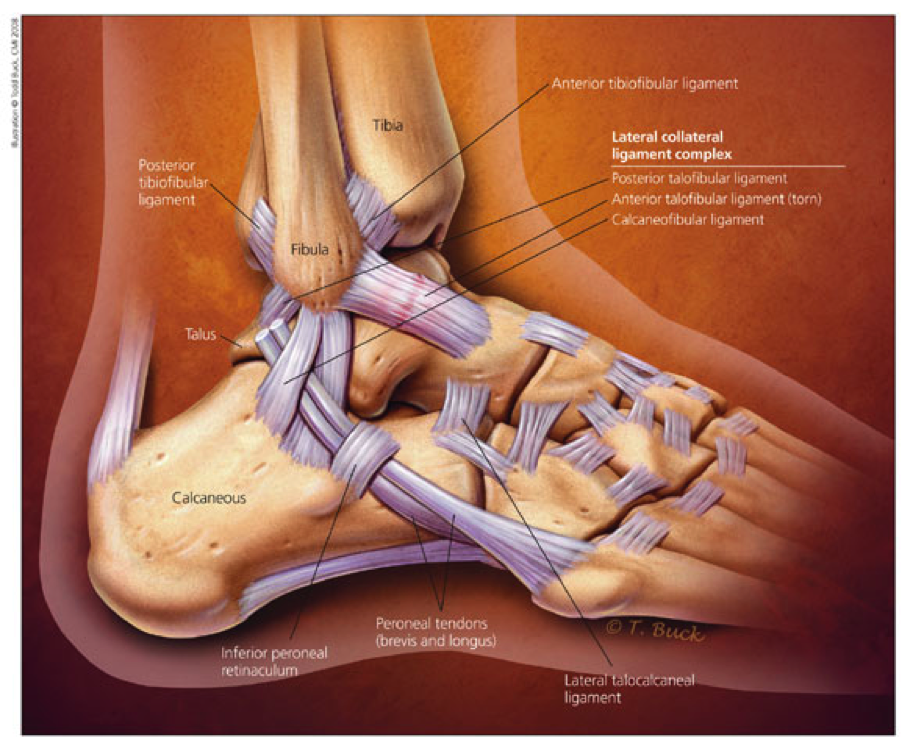Is manual physical therapy & exercise more effective than exercise alone in the management of patients with inversion ankle sprains?
Posted on 21st February 2014 by Jimmy Stout

Introduction
Inversion or lateral ankle sprains are very common among athletes and the general physically active population. There is an annual incidence of 7 ankle sprain injuries per 1000 people. The majorities of these injuries are inversion sprains occurring secondary to landing on a foot that has your toes pointed downwards (plantar flexed) and with your foot rolling towards the outside (inverted). The result of this type of sprain is often damage to the lateral ligaments of the ankle. The majority of those who suffer a lateral ankle sprain recover with conservative treatment and return back to their prior level of function. During this conservative treatment time physical therapy might be indicated to expedite a patient’s recovery. It is well known that therapeutic exercise will help patients regain their ankle range of motion and strength back faster than no exercise at all.

About the Study
The purpose of this study was to compare the effectiveness of manual therapy (MT) and exercise (ex.) to a supervised home exercise program (HEP) in the management of individuals with inversion ankle sprains. The study was randomized with 74 patients placed into 2 groups 37 in a group receiving MT and ex. and 37 in a group receiving an HEP only. Patients were mainly included if they met the following criteria:
• Current ankle symptoms (regardless of how long ago the sprain occurred)
• Grade 1 or 2 sprain on the West Point Ankle Sprain Grading System
• Age: 16 and 60 years
• Numeric pain rating scale (NPRS) score greater than 3/10 in the last week
• Negative Ottawa ankle rules
• Exhibited no contraindications to manual therapy
There were several outcome measures that the researchers used to assess the improvements of the participants during their study at a 4-week point and a 6-month point. The following were utilized:
• Foot and Ankle Ability Measure (FAAM) ADL subscale
• FAAM sports subscale
• Lower Extremity Functional Scale
• Numeric Pain Rating Scale
• 15-point global rating of change (GRC)
All 7 experienced physical therapists in this study received training and a detailed manual of standard operations and procedures to ensure the quality of the therapy provided would be standardized. The HEP group was seen by a physical therapist for 4 x 30 minute sessions (1 per week), with a focus on the exercise program and appropriate progressions. This program included ROM Exercises (foot and ankle), gentle strengthening, band and body-weight resistance exercises, proprioception/balance exercises, and functional weight-bearing activities. The MT and Ex. group were treated by a physical therapist twice weekly for 4 weeks, for a total of 8 x 30 minute sessions. Treatments included the following mobilizations: proximal tibiofibular joint, distal tibiofibular joint, talocrural joint, non-weight bearing talocrural mobilization, subtalar joint, and weight bearing talocrural mobilization. These were performed in addition to the HEP described for the other group.
Results
At the 4 week follow-up period, the MT and Ex group had greater improvements in the FAAM ADL, FAAM Sports, LEFS, and NPRS. At the 6 month follow-up the results were the same (statistically significant improvements in every functional outcome measure).
Strengths and weaknesses
This study, like all studies, had some limitations. These include: no treatment (control) or placebo intervention group, No therapist blinding, MT and Ex subjects spent twice as much time with a therapist than those in the HEP alone group, and no assessment or correlation with common objective clinical measures (such as range of motion. Despite these limitations there are many strengths to be noted. This study can be easily repeated and is already an extension of previous studies looking at this particular topic. I liked how the authors focused on both pain and function in their outcome measures they chose when evaluating their participants. Lastly, this information is clinically relevant to many orthopaedic physical therapists who will likely encounter several patients who require rehabilitation after an inversion ankle sprain.
Take home message
This study demonstrated that patients who underwent a rehabilitation approach combining manual therapy and exercises achieved greater improvements in pain and function at both 4 weeks and 6 months when compared to those who performed a progressive home exercise program alone. The results of this study are strengthened and supported by the conclusions of the previous systematic review by Brantingham et al (2012). Both conclude that a combined approach of manual therapy and exercise is effective for reducing pain and improving function at short-term follow-up. Anyone who experiences a lateral ankle sprain and wishes to recover in the quickest way possible can seek out a therapy treatment that will include manual therapy interventions in addition to home exercises.
Reference
Cleland JA, Mintken PE, Mcdevitt A, et al. Manual physical therapy and exercise versus supervised home exercise in the management of patients with inversion ankle sprain: a multicenter randomized clinical trial. J Orthop Sports Phys Ther. 2013;43(7):443-55.




No Comments on Is manual physical therapy & exercise more effective than exercise alone in the management of patients with inversion ankle sprains?
Exercise, keep healthy
The campaign to all exercise.
27th May 2015 at 3:16 amNice blog! Thank you for posting it. We are also work in the same field. For more information please visit our website http://bit.ly/11BwDcE
3rd December 2014 at 3:22 am